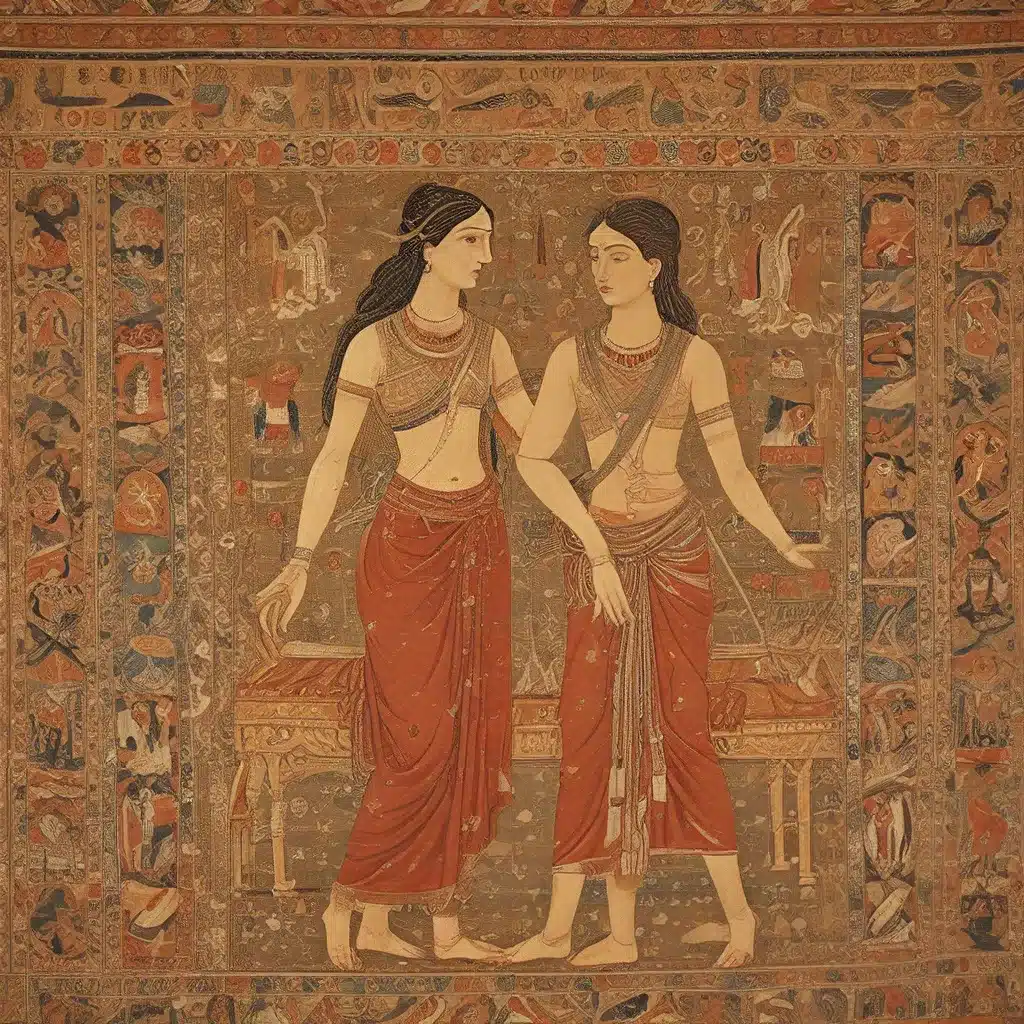
In the vast expanse of human history, the story of our ancestors is often shrouded in the mists of time, their legacies obscured by the passage of millennia. Yet, like the intricate threads of a tapestry, the remnants of these forgotten civilizations continue to captivate and enlighten us, offering a glimpse into the intricate tapestry of our shared past.
Uncovering the Fabric of Ancient Societies
The study of ancient textiles has emerged as a remarkable window into the lives and practices of our distant forebears. Archaeologists like Eva Andersson Strand, director of the Centre for Textile Research at the University of Copenhagen, have dedicated their careers to unraveling the secrets hidden within the material remains of these bygone eras. By meticulously analyzing the tools and techniques used in the production of textiles, researchers are able to reconstruct the complex social, economic, and cultural fabrics that once defined these ancient civilizations.
Through experimental archaeology, Andersson Strand and her team have been able to replicate the processes and materials used by Bronze Age and Viking weavers, revealing insights into the remarkable sophistication and diversity of their textile craftsmanship. From the coarse sails that propelled Viking longships across the seas to the intricate, fine-threaded fabrics found in the burials of Minoan palaces, these investigations have shed new light on the specialized nature of textile production and the critical role it played in the flourishing of these ancient societies.
Weaving a Tapestry of Interconnectedness
The study of ancient textiles has also challenged the traditional narratives of “Western Civilization” that have long dominated historical discourse. As Naoíse Mac Sweeney, a Professor of Classical Archaeology, eloquently argues, the notion of a singular, linear “golden thread” of cultural inheritance from ancient Greece and Rome to the modern West is a myth, carefully crafted to justify colonial expansion and the oppression of marginalized peoples.
Instead, the evidence from textile archaeology points to a far more interconnected and diverse tapestry of cultural exchange and influence, stretching across the ancient world. From the merchants of 14th-century Sudan conducting trade in Greek, to the Buddhist sculptors of northern India and Pakistan drawing on the artistic traditions of the Indo-Greek kingdoms, the true history of the “West” is one of blended and symbiotic relationships, not a narrow, exclusive lineage.
Rediscovering the Lost Threads of History
As archaeologists continue to unearth the material remains of ancient civilizations, the study of textiles has become increasingly vital in piecing together the complex narratives of our shared past. Margarita Gleba, an archaeologist at the University of Cambridge, has been analyzing the textile industry of Italy and Greece in the first millennium BC, revealing fascinating insights into the regional differences in weaving techniques and the specialization of textile workers.
Similarly, Tereza Štolcová, a textile archaeologist at the Institute of Archaeology of the Slovak Academy of Sciences, emphasizes that while the tools alone may not predetermine the final product, they do offer invaluable clues about the range of fabrics that could have been produced in a given time and place. By carefully examining these ancient loom weights and spindle whorls, researchers can begin to reconstruct the intricate tapestry of textile production that once defined the economies and cultures of the past.
Weaving the Threads of the Future
As we continue to unravel the mysteries of our shared past, the study of ancient textiles has become an increasingly vital and interdisciplinary field of inquiry. By integrating the insights of archaeology, anthropology, and material science, researchers are able to piece together the complex narratives that have long been obscured by the ravages of time.
From the Viking sails that conquered the seas to the fine-spun threads that adorned the royal burials of the Minoans, the fabric of our history is being rewoven, thread by thread, into a tapestry of unprecedented depth and complexity. And as we come to appreciate the rich diversity and interconnectedness of these ancient civilizations, we may find that the true legacy of the past lies not in a mythical “Western Civilization,” but in the vibrant, ever-evolving tapestry of human achievement and resilience.
So let us continue to explore the forgotten threads of history, unraveling the mysteries of the past to better understand the present and shape the future. For in the intricate weave of this ancient tapestry, we may just find the keys to a more inclusive, just, and sustainable world.


